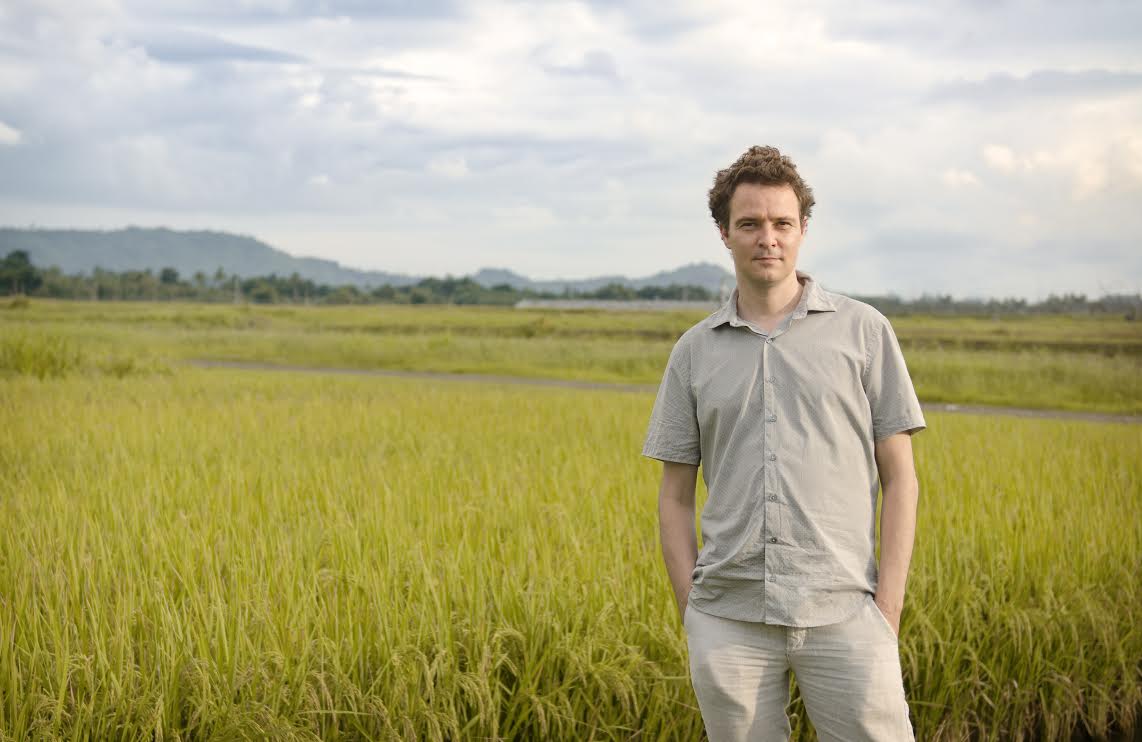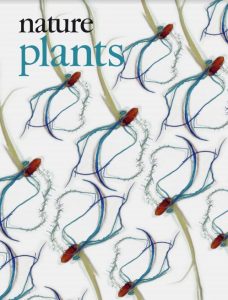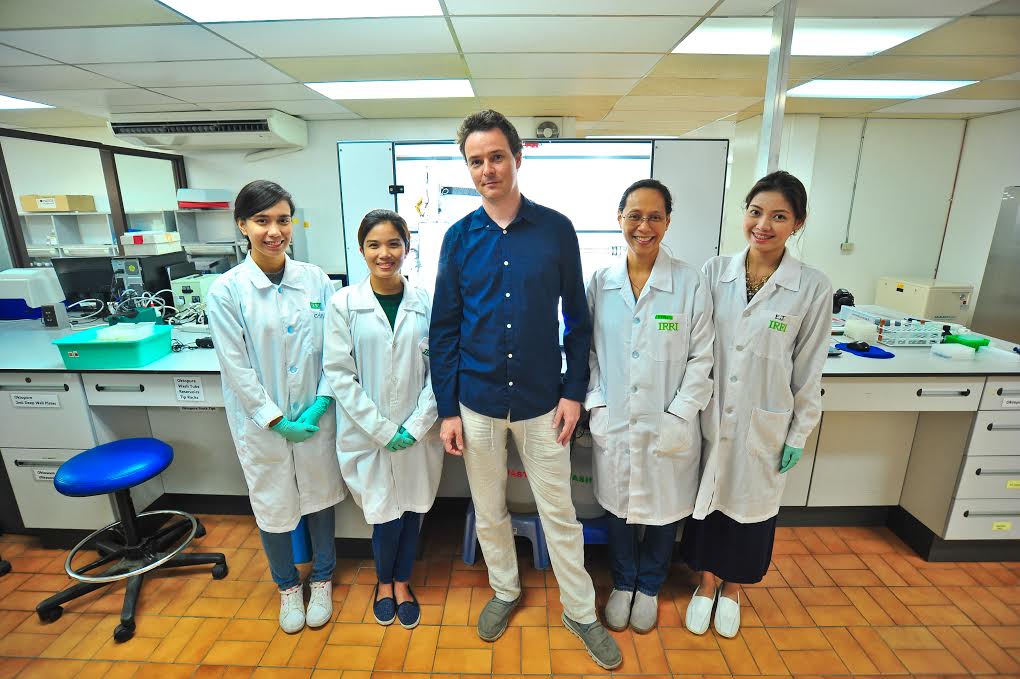In this interview, molecular biologist Tobias Kretzschmar shares his scientific journey and offers tips to aspiring scientists.

Hailing from Germany, Tobias Kretzschmar heads the Genotyping Services Laboratory (GSL) in the Plant Breeding Division of the International Rice Research Institute (IRRI). As a scientist early in his career, Dr. Kretzschmar has already established a strong record of success. But then again, he has a history of achieving success at a young age.
 A mere three years after receiving his PhD in molecular plant physiology from the University of Zurich in Switzerland, Dr. Kretzschmar authored a paper on the discovery of a plant hormone transporter in Nature magazine (2012). In the same year, he won the Best Paper Competition in IRRI’s International Young Scientists Conference for his work on genes that enable rice seeds to germinate underwater. He authored a paper about this key trait for direct-seeded rice in Nature Plants in 2015, which made the cover of the magazine (see photo of cover). Apart from the service team that Dr. Kretzschmar leads, the GSL has an R&D team developing molecular markers and genotyping platforms. He also leads a gene discovery team that identifies genes associated with traits that enable plants to adapt to harsh environmental conditions.
A mere three years after receiving his PhD in molecular plant physiology from the University of Zurich in Switzerland, Dr. Kretzschmar authored a paper on the discovery of a plant hormone transporter in Nature magazine (2012). In the same year, he won the Best Paper Competition in IRRI’s International Young Scientists Conference for his work on genes that enable rice seeds to germinate underwater. He authored a paper about this key trait for direct-seeded rice in Nature Plants in 2015, which made the cover of the magazine (see photo of cover). Apart from the service team that Dr. Kretzschmar leads, the GSL has an R&D team developing molecular markers and genotyping platforms. He also leads a gene discovery team that identifies genes associated with traits that enable plants to adapt to harsh environmental conditions.
His impressive credentials and expertise in botany, molecular genetics, and functional genomics may give him the appearance of being a “sciencehead” who is out of touch with the real world. But, that’s the other thing about Dr. Kretzschmar. He considers his work, which is fundamental science, as directly applicable for alleviating poverty and ensuring food security. (See The future faces of rice science.) He describes this as a “rare privilege.”
In this interview, Dr. Kretzschmar shares his brief but impressive scientific journey and offers tips to aspiring scientists.
Have you always known that you would be a scientist?
I always wanted to do plant science. But, I started my career on the academic side. I envisioned an academic pathway of getting my PhD and a postdoctorate degree, becoming an assistant professor, and having a permanent position at some small or big university, depending on how well I did.
When I was starting my career, I did not see myself going into applied science. But now, I find it more rewarding than basic science. Being able to publish and contribute on the discovery side is important. However, what I can do here at IRRI at the moment is bridge discovery work or basic science with applied science. Seeing products coming out of my work makes me feel that I am doing the right job.
Germany is not a rice-growing country. What made you choose rice?
I had not worked with rice before I came to IRRI, but knowing that rice is the world’s major staple crop struck a chord with me. My wife is Japanese, so rice is important for her as well. Looking at where I can have the most impact as a scientist, the CGIAR centers came up, and I think IRRI was the most appealing in terms of its vision and mission. I also considered what’s possible in the organization. In terms of the location of IRRI headquarters, I think the Philippines is a great country in which to live.
Can you tell us more about what you are doing in the GSL?
The GSL offers tissue sampling and sample tracking, DNA extraction, and a variety of low- to high-density genotyping assays. These range from tracking single traits such as Sub1 to establishing genetic fingerprints of several thousand markers. We have several ongoing projects developing new platforms and creating collaborations and partnerships with other companies that will do some of the genotyping for us.
One of our projects is the Genomic Open Source Breeding Informatics Initiative (GOBII). It is a 5-year project funded by the Bill & Melinda Gates Foundation. The project will create a platform for breeders to access, use, and analyze genotyping data. It’s a big database project across three CGIAR centers and five crops that will allow breeders to have easy access to the genotyping data, and provide tools for their analysis. Building that database takes time, particularly since it has to be well integrated with breeding management systems.
There is a core database now but it’s going to take another year before it becomes a tool that’s accessible to and easy to use by breeders. Breeders who are well versed may not require informatics to do it, but we want to make it easy to use, almost like an iPhone, so that breeders can choose the apps for analysis and do the downstream analysis.
What are your goals as the head of the GSL?
Since I came on board a year ago, we’ve made a lot of changes in the GSL. Interacting with our clients is very vital: making sure the product we deliver is fully understood. We also help with downstream analysis. Our motto is to do things better, cheaper, and faster, and provide friendlier services.
Our first goal is to make genotyping cheaper. We are trying to make it cheaper because the cost of genotyping is the key restraint for breeders to fully adopt it across their programs. That is the challenge at IRRI because the equipment and the maintenance of the equipment are expensive here in the Philippines.

Our second goal is to make it faster. Making it faster is difficult for in-house service because we are constrained by logistics. For outsourced service, we are constrained by regulations for sending materials out.In terms of making things better, I think our data quality is on a par with international standards and we are constantly adding new markers and panels to our portfolio and running state-of-the-art chemistry.
About the friendlier service that I touched on, we try to be demand driven. Rather than just having an off-the-shelf service, we try to create a service that meets breeders’ demand by knowing their needs. We are trying to make genotyping data a direct decision support tool for them. Our goal is to integrate genotyping into the general breeding workflow. That is a function of cost but it’s also a function of how fast the breeders can obtain the data and how easy it is for the breeders to analyze the data and make decisions based on the data. That is the GSL workflow in a nutshell.
Among your projects, which one are you most passionate about?
For the bigger picture, there’s the Transforming Rice Breeding (TRB) project. Here, we are mostly involved in developing innovative genotyping platforms and workflows to make genotyping accessible for breeders. Precision breeding, that’s our component in the TRB. GOBII feeds into the same idea as TRB so these projects work synergistically. Both are large projects in which we play a small but important role. In terms of having an impact on rice breeding, both are going to be tremendous because they will not only improve rice breeding but also transform it into something more modern, more streamlined, more integrated, and more effective. Also, we are working on genome editing in collaboration with C4 Rice and the Genomics group at IRRI. It’s a kind of consortium to get genome editing off the ground at the institute so as not to miss out on its future potential.
From a scientific aspect, I might be the most passionate about Nutrient Rice. It’s a very small project in collaboration with the Philippine Rice Research Institute (PhilRice) and the National Institute of Agricultural Botany (NIAB) in Cambridge. It targets Philippine heirloom rice from the Cordillera Region. The idea is to assess the rice from a health perspective. PhilRice has collected 800 accessions of colored heirloom rice: pink, purple, black, red, brown, and speckled. There are antioxidants, polyphenolics, and secondary compounds in these varieties. We are going to investigate these for their health benefits. We’re hoping to obtain a lot of useful information and find out which ones are the healthiest varieties that would help in promoting the consumption of heirloom rice.
From a breeding perspective, we want to be able to use genes associated with their health benefits and incorporate them into major breeding programs at IRRI. This way, we can bring the health benefits from the colorful rice that is grown on a very small scale up in the mountains to more people through IRRI-developed varieties. PhilRice is in direct contact with the indigenous tribes that grow heirloom rice and the benefits will also trickle down to them. It’s the project I am most passionate about, even if it is my smallest project.
What is the secret to being a successful young scientist?
I don’t know the secret! But, in terms of being successful, it comes down to a few components. Clear communication with your team is one. Making sure that everyone on your team knows their role and the bigger picture where the team wants to go. Communication and clarity are probably the most important.
The second most important is collaboration. Nobody can do everything by themselves so building strong partnerships within IRRI and also with external partners drives the science because everyone has their area of expertise. Collaboration works best if you communicate well if everyone in the collaboration has a clear vision of where we’re going and everyone is clear on what their objectives are. Communication, collaboration, and clarity, that’s the 3Cs.
What is your advice to aspiring scientists?
Be curious. That’s another C! Don’t be afraid to fail. Failing is always a part of the job. If you are too cautious, you will never get anywhere. Build partnerships and collaborations as early as possible. Having a strong network is very important in becoming a successful scientist.
Be open and be creative. Don’t tie yourself down too much and don’t focus only on what your boss tells you to focus on. Keep an open mind and a broad vision because you never know where that will lead you. Focus is important but, if you focus too early and too much, you will never get out of your comfort zone.
And finally, balance. One thing that IRRI does well is balancing between being publication-focus and product-focus. As a young scientist, you have to publish. But, if you want to make a real impact, it’s the product that matters, so try to balance that out. That is more difficult for some people. If you’re very much on the breeding side, you’re not going to be able to publish but you will have a stronger impact. If you are on the discovery side, it’s going to be easier to publish but it will be more difficult to translate that knowledge into an actual product, so always be aware of both worlds.
What can you say about making science sexy for the general public?
It is very difficult to educate or make the broad audience have a sexy view of science. Communicating science to the general public for the sake of science is not going to work. If you want the public to be interested in science, you need to have a sexy product, something that is convincing. Then, you communicate the science behind it and how many scientists were involved. Most people don’t know how much work there is in breeding. Most people think that whatever is grown in the field has been there forever. They are not aware how much cutting-edge science was involved.
It’s difficult even if you’re good in communication. Communicating with small teams is easy but communicating on a national level trying to convince countries that this is the right strategy is difficult. My approach is linking into young scholars to get them interested and excited about the work. We engage a lot of interns rather than tackling a broad audience. We also try to do some master’s work and, as much as possible, that goes all the way up to the PhD level. If you can convince one or two individuals every year that science is sexy, that will trickle down. Linking with other young scientists is probably the best way to get them excited about plant science.
In terms of the lines of communication, I think it’s important to start high. IRRI can’t reach all farmers, so IRRI has to be involved in the higher policy-making level. To convince policymakers of the usefulness of the science we do and the amount of science and hard work that goes into the development of new products. That would be my approach.





